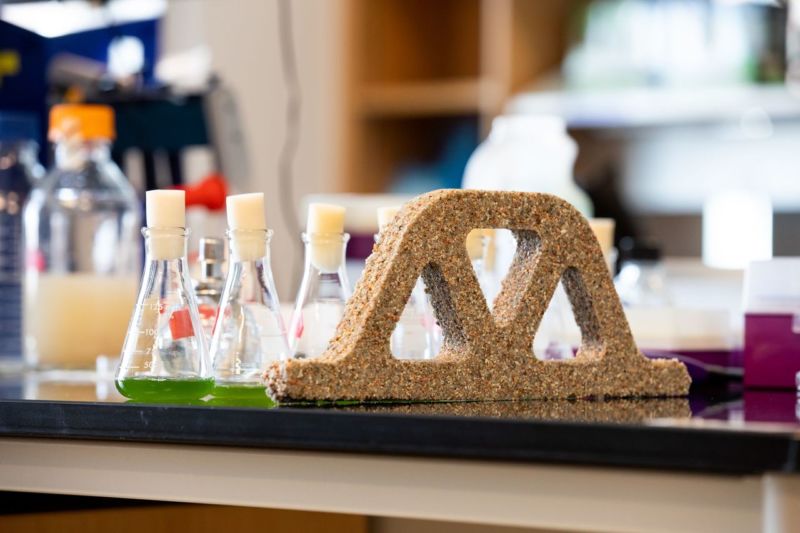“Living concrete” is an interesting first step

Enlarge / The cyanobacteria in flasks contribute to the structure at right. (credit: Cell Press)
It seems like every week, I can do an article on some interesting science that ended up buried under hyperbolic headlines and overly credible coverage. This week's victim is "living concrete." It only sort of exists, in that the material can either be living or concrete, but not really both. It doesn't heal itself either. But none of that means the publication has no merit, as it does show that the concept more or less works, and it identifies a number of areas that need further study in order for "living concrete" to actually become useful.
La vida concreteThe idea of mixing living things and concrete isn't quite as strange as it sounds. Part of concrete's strength comes from carbonates that are formed during the curing process. Lots of living things also produce structures made of carbonates; these include some very robust structures that are a mix of proteins and carbonates, like the shells of many aquatic animals.
As such, there's been a lot of research around the periphery of structural concrete that has involved biology. This has mostly involved lots of work on trying to figure out how the shells of living creatures get some of their impressive properties. But it has also included the idea that living things could form structural carbonates, including a few attempts to make concrete that self-heals thanks to the presence of carbonate-producing microbes embedded in it.
Read 14 remaining paragraphs | Comments